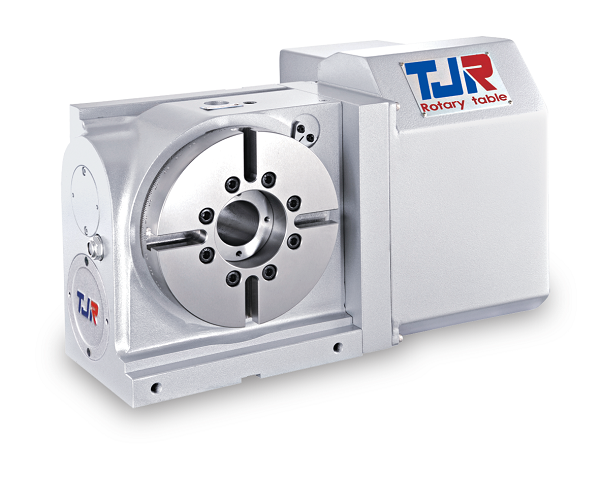Adding a 4th axis rotary table to a milling machine provides several advantages to your job shop. Having another axis to work with gives milling machine users more precision and accuracy without having to change part positions.
Also, an additional axis would prove to make any milling machine more diverse in the work it is capable of doing. Lathe machines introduce the aspect of a rotating part, so a rotary table would add the same benefits provided. A 4th axis rotary table, in general, can provide more precision and ease to a complex design, reducing time and costs for the production of a certain piece.
How It Works
A 4th axis rotary table serves to add a rotating axis to the desired piece being shaped. Similar to a lathe’s rotating head-stock, the rotary table holds the piece and moves it at exact intervals of revolutions.
Because it can move in precise degrees of motion, machinists can easily calculate correct positions, just as they do with the other three axes of motion on the machine. Once all 4 axes are used, making grooves or holes in the piece is much easier than without the rotary table. This saves time by discarding the task of removing and resetting the piece in another position. Having the ability to move the piece in determined intervals and precision in multiple axes is important for more complex machine work.
The Importance of a 4th Axis Rotary Table
Just like with the other three axes of motion, the 4th axis can be adjusted for specific amounts of distances to accurately tell what position you are at in relation to the dimensions of the piece.
Also, the scales used to measure its motion can save time and resources by reducing the amount of mistakes that could result in major delays. A 4th axis rotary table can be integrated into a milling machine’s control in order to set the positions needed. This makes accurately machining multiple pieces faster and easier to accomplish.
Examples of Diversity
With a full 4th axis, your milling machine can handle a much more diverse set of jobs. For example, machining parts with holes in which mill must work with a circular pattern with equal distances is certainly possible with 360 degree movements. Arc cuts, grooves, and other complex curves are included with the benefits of a 4th axis rotary table. Cutting out the teeth of gear parts is another possible application.
A 4th axis rotary table extends the degree of motion necessary for complex work needed by any skilled machinist. With quality material, a machinist can create intricate parts and expand the types of orders your job shop can take on.
CNC Indexing & Feeding Technologies offers a wide selection of 4th axis TJR rotary tables. Contact us today to learn about our high quality CNC accessories.




You have shown very good importance of a 4th axis rotary table, It was very knowledgeable and will help many people to know about the same! Imressive..